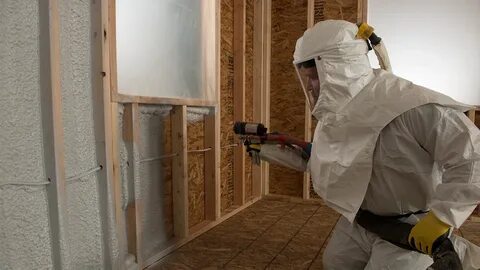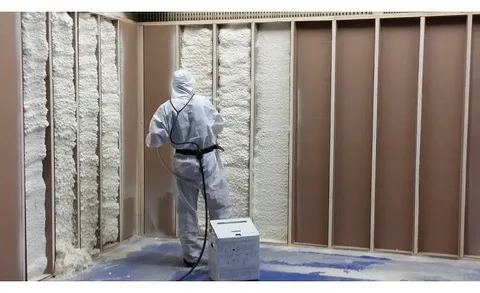Top 7 Uses for Closed Cell Spray Foam in Homes
Insulation is one of those things people don’t think about until their house starts sweating in July or leaking heat in January. Closed cell spray foam isn’t just some fancy upgrade—it solves real problems like moisture damage, drafty walls, and rooms that feel like two different time zones. The challenge is figuring out where it actually makes a difference.
This post breaks down the top seven ways closed cell spray foam earns its keep inside homes—whether you’re remodeling, sealing up new construction, or trying to stop your utility bill from acting like a roller coaster.
1. Sealing Basement and Crawl Space Walls
Basements and crawl spaces are damp, dark, and a magnet for mold when insulation isn’t doing its job. Proper closed cell spray foam insulation service adds structure and helps stop moisture in its tracks.
Moisture Resistance is a Key Advantage
This type of foam doesn’t just insulate—it also acts as a vapor barrier. It repels water rather than absorbing it, which helps protect foundations and prevents mold spores from growing behind walls or in tight corners.
Reduces Air Leakage and Musty Smells
The foam expands on contact and seals off gaps that other materials miss. That stops drafts, reduces humidity, and improves indoor air quality—especially useful in humid climates or older homes with crawl space vents.
Fun Fact: Closed cell foam increases the structural strength of basement walls by as much as 300%, depending on the surface it’s applied to.
2. Insulating the Underside of Roof Decks
If your attic turns into a furnace every summer, the problem is usually your roof deck. Closed cell spray foam works exceptionally well under the sheathing, creating a thermal break between your roof and living space.
Creates a Controlled Attic Environment
Unlike traditional attic insulation that sits on the floor, spray foam under the roofline turns the entire attic into a semi-conditioned space. That helps HVAC systems run more efficiently, especially if they’re located in the attic.
Improves Lifespan of Roof Materials
By reducing thermal cycling—those constant temperature swings—closed cell foam can reduce stress on shingles, fasteners, and roof sheathing, leading to longer service life.
Fun Fact: Applying spray foam under the roof can reduce attic temperatures by 30°F or more during peak summer heat.
3. Reinforcing Exterior Walls in Wind-Prone Areas
Closed cell foam offers insulation and rigidity. That makes it valuable for homes exposed to high winds or storm zones where structural stability matters just as much as energy efficiency.
Acts Like a Rigid Support Layer
Once cured, the dense foam forms a hard shell inside wall cavities. It stiffens the wall and helps reduce racking or shifting caused by wind pressure or minor seismic activity.
Fills Gaps That Batts or Boards Miss
Standard insulation leaves weak points at corners, wiring gaps, and seams. Spray foam conforms to every nook and cranny, eliminating air paths that undermine your wall’s performance.

4. Boosting Floor Insulation Over Unheated Spaces
Floor insulation is often overlooked, especially over garages or crawl spaces. Closed cell spray foam is ideal here because it sticks directly to the subfloor and doesn’t sag or shift over time.
Prevents Cold Floors and Heat Loss
In rooms built over unconditioned areas, foam forms a continuous seal beneath the floor. That helps maintain room temperature without needing to blast heat in the winter.
Moisture Protection From Below
Crawl spaces often collect humidity, which can seep upward into subflooring. Closed cell spray foam blocks vapor migration and reduces the risk of wood rot or mold underneath.
5. Improving Bathroom and Kitchen Wall Performance
Moisture-rich rooms like bathrooms and kitchens need more than standard insulation to stay dry and mold-free. Closed cell foam adds resilience behind walls, especially around plumbing and exterior-facing surfaces.
Stops Condensation Build-Up
Plumbing chases and exterior walls in kitchens and baths are notorious for condensation issues. Closed cell foam’s low permeability helps keep moisture from reaching drywall or trim.
Reduces Noise and Draft Transfer
Foam also cuts down on noise between rooms and helps isolate smells or airflow—useful near kitchen ranges, showers, or ventilation outlets.
6. Creating an Air Seal in Rim Joists
Rim joists are some of the leakiest parts of any home, and fiberglass doesn’t solve the problem. Closed cell foam is a targeted solution for these hard-to-reach areas.
Fills Odd Shapes with High Efficiency
- Rim joists often include framing lumber, pipes, and wires that create irregular gaps.
- Closed-cell spray foam conforms to these complex shapes without leaving voids.
- It seals the entire perimeter in one application, reducing labor steps and energy loss.
Improves Whole-House Energy Metrics
- Proper sealing at rim joists reduces air leakage throughout the structure.
- This leads to better blower door test scores, signaling improved airtightness.
- HVAC systems operate more consistently due to reduced drafts and thermal bridging

7. Enhancing Garage-to-Home Separation
Garages get hot, cold, smelly, and sometimes dangerous with attached car fumes. Insulating the common wall and ceiling with closed cell spray foam adds safety and comfort.
Reduces Fume and Odor Infiltration
Closed cell foam creates an airtight seal that keeps carbon monoxide, fuel vapors, and engine smells from seeping into adjacent living spaces.
Improves Fire Resistance
While not a replacement for fire-rated drywall, closed cell foam has a Class 1 fire rating and adds passive protection when applied according to code.
| Use Case | Key Benefit | Why Closed Cell is Ideal |
|---|---|---|
| Basement/Crawl Space Walls | Moisture barrier + mold control | Seals and reinforces below-grade walls |
| Roof Deck Underside | Reduces attic heat load | Creates conditioned attic space |
| Exterior Walls (Wind Zones) | Structural reinforcement + air sealing | Improves rigidity + thermal resistance |
| Floors Over Garages or Crawl Spaces | Cold floor prevention | Adheres to subfloor, resists moisture |
| Kitchens & Bathrooms | Stops condensation | Low perm rating + air seal |
| Rim Joists | Fills odd gaps + blocks air | Best for sealing irregular cavities |
| Garage Separation Walls | Blocks fumes and noise | Airtight barrier between zones |
Conclusion
Closed cell spray foam isn’t just for the attic—it’s one of the most versatile insulation tools available for homes. From sealing out moisture in the basement to reinforcing walls against wind and weather, it performs well under stress and lasts for decades when installed right.
Each of the seven uses listed above solves a specific problem—drafts, moisture, temperature swings, or structural weakness. Whether you’re planning a full remodel or just trying to make one room more livable, spray foam gives real results in places other materials can’t reach or hold up.
Reach our Website for Professional assessment:
https://allfoamandinsulation.com/?utm_source=backlink
FAQs
Is closed cell spray foam safe to use in bathrooms?
Yes, it’s ideal for high-humidity areas like bathrooms. Its low permeability prevents moisture from entering walls and reduces the risk of mold behind tiles or drywall.
Can closed cell spray foam be used under a metal roof?
It works well under metal roofs, especially when applied to the underside of the decking. It adds rigidity, reduces noise, and stops condensation buildup.
How long does closed cell spray foam last in walls?
Once installed properly, it can last the lifetime of the building. It doesn’t sag, compress, or degrade under normal conditions.
Does closed cell foam need a vapor barrier?
In many cases, no. Closed cell foam already acts as a vapor barrier due to its low permeability, especially at the thicknesses used for exterior walls or roof decks.
What’s the difference between closed and open cell spray foam?
Closed cell has a higher R-value, acts as a vapor barrier, and hardens into a rigid surface. Open cell is softer, more flexible, and better for sound absorption but not water resistance.
Reviewer: Lily Johnson offered her feedback after reviewing this post. With 8 years in the spray foam insulation field, her suggestions centered around improving outreach to homeowners looking for quality insulation solutions.




Leave a Reply
Want to join the discussion?Feel free to contribute!